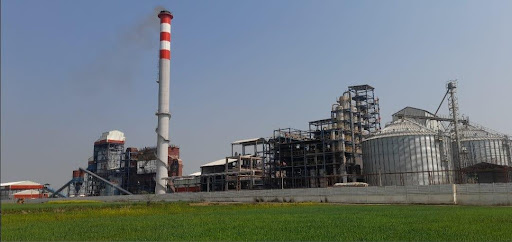
Anaerobic-Aerobic based Condensate Treatment and its Challenges
The condensate generated from the multiple effect evaporators (MEE) of alcohol distilleries is loaded with high chemical oxygen demand (COD) and volatile acids (VA). Generally, Condensate Polishing Unit (CPU) based on anaerobic-aerobic process, followed by filtration and reverse osmosis is used for the treatment of condensate, so that it can be recycled for fermentation and other applications. However, excessive COD and VA in the MEE condensate increases the total organic load in the anaerobic tank, and under such circumstances, it becomes very difficult to operate the anaerobic and the subsequent aerobic tanks at optimum conditions. As a result, the overall COD removal efficiency of the CPU plant also decreases. Therefore, an effective solution is required in order to operate the anaerobic-aerobic system at optimum performance levels at high input COD load.
Application of Oxzytreat for improving CPU Performance
OxzyTreat is a unique advanced oxidation-based process for the treatment of process condensate generated from multiple effect evaporators of ethanol distilleries. The process uses an effective combination of catalysts, oxidizing agent and aeration which reduces the COD by degrading and removing organic compounds in the condensate. The process is fast, easy to operate and does not leave any toxic by-products after reaction. The process comprises of a reaction tank designed to carry out the advanced oxidation of condensate using the ‘OxzyTreat’ catalyst developed by Catalysts Biotechnologies Pvt. Ltd.
OxzyTreat can be used to improve the overall CPU efficiency in two ways-
- Pre-treatment of condensate
- Post-treatment of condensate
Pre-treatment of condensate
OxzyTreat can be used before equalization and pH neutralization tank of the anaerobic-aerobic system. The OxzyTreat reaction tank can be integrated with the existing CPU plant and no changes would be required in the existing CPU plant equipment. This scheme is useful when the operators want to reduce the organic load on their anaerobic tanks, minimize the effect of condensate fluctuations to maintain high-efficiency of anaerobic treatment and the overall CPU. This scheme will have multiple benefits, such as –
- Reduces the COD/VA of the condensate by 25-40%, thereby reducing the organic load and fluctuations in the anaerobic tank
- Helps to maintain higher condensate flow rate and optimum COD reduction efficiency
- Reduces the temperature of the hot condensate by 10-20 o
- Helps to increase the pH by about 1.5 to 2 units, therefore reducing the consumption of caustic soda/lime for pH neutralization before feeding to anaerobic tank
- Helps to reduced COD and TDS load on the reverse osmosis process, for tertiary treatment
- Helps to improve the quality and quantity of the permeate
- Increased life of the RO membrane
Recent Posts

The Role of Enzymes in Maize-to-Ethanol Fermentation
With the rising demand for renewable energy sources and sustainable fuel alternatives, ethanol production has gained significant momentum worldwide. Ethanol, also known as bioethanol, is a biofuel commonly used as a renewable alternative to fossil fuels. One of the most popular feedstocks for ethanol production is maize (corn), primarily due to its high starch content, wide availability, and suitability for large-scale production.

Challenges in Rice to Ethanol Fermentation and How to Overcome Them
Rice is one of the most important staple crops globally, particularly in Asia, where it constitutes a significant portion of daily food intake. However, rice also has tremendous potential as a feedstock for ethanol production due to its high starch content.

Uses of Enzymes in Grain to Ethanol Fermentation: A Comprehensive Guide
Ethanol production through the fermentation of various feedstocks has gained considerable attention as a renewable energy source. Among the many feedstocks, grains such as corn, wheat, rice, barley, and sorghum play a crucial role due to their high starch content, which can be effectively converted into ethanol.
Catalysts Connect
Keep up to date with our latest news and analysis by subscribing to our regular magazine and newsletter

Post a comment
Your email address will not be published.